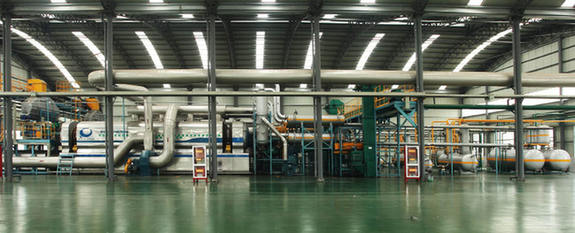APEC China 2014: A New Opportunity for Sino-U.S. Relations
ZHU FENG
In November 2014, the 22nd APEC Economic Leaders’ Meeting will be held in Beijing. Since the first APEC summit in Seattle in 1993, the annual Economic Leaders’ Meeting has been an important platform for members to promote political communication and deepen regional cooperation as it gathers leaders from almost all important economies in the Asia-Pacific region. Therefore, the meeting not only polarizes regional attention, but also weighs heavily on the entire world. The 2014 summit seems to be attracting even more interest since it is expected to ease tensions between China and the U.S. and between China and Japan, and significantly impact the future of the Asia-Pacific constellation.
China-U.S. Presidential Meetings
In June 2013, Chinese President Xi Jinping and his U.S. counterpart Barack Obama held an informal meeting in Sunnyland, California. The two state leaders had in-depth and candid exchanges on bilateral relations as well as major global and regional issues, and reached consensus on enhancing cooperation, deepening mutual understanding, and strengthening policy communication and coordination. During the meeting, President Xi proposed to construct a new type of relationship between the two great powers, featuring non-conflict, non-confrontation, mutual respect and win-win results. In response, President Obama stressed that the U.S. would be willing to build a new type of bilateral cooperation mode together with China.
After the presidential meeting, although the bilateral relations made headway to a certain degree, on the North Korea nuclear issue, for example, the two countries encountered huge challenges in advancing their overall relationship. On November 23, 2013, China demarcated the East China Sea Air Defense Identification Zone, an important move to reinforce territorial defense and national security precautions in light of international conventions. Among the major countries in East Asia, China is the latest to establish an air defense identification zone (ADIZ), and has been prudent in doing so. However, as a country that has enjoyed air and maritime supremacy in the west Pacific since the end of WWII and been used to free navigation, the U.S. overreacted to China’s ADIZ, believing China to be intentionally challenging its dominant role in the west Pacific. The Pentagon even claimed it as China’s “destabilizing attempt to alter the status quo in the region.” On November 26, the U.S. deployed two B-52 bombers over China’s defense zone, in protest against China’s move. Meanwhile, the U.S. joined hands with Japan, refusing to recognize the East China Sea ADIZ.
This year has seen an escalation of tension between China and the U.S. Daniel R. Russel, U.S. Assistant Secretary of State for the Bureau of East Asian and Pacific Affairs, in his congressional testimony on February 5, blatantly censured China’s policy on the South China Sea, cast doubt on the “nine-dash line,” and blamed the turbulent situation on China’s so-called unilateral move. The U.S. thus changed its policy of non-involvement and non-committal attitude to a position of entire involvement and intervention. By supporting certain Southeast Asian countries that have territorial disputes with China, the U.S. intends to curb China’s legitimate and justified right-safeguarding action, and bar China from seeking its sovereign right to the islands in the related sea areas in light of the customary international practice on historical rights and International Maritime Law. Thus, disputes around the South China Sea have become a new factor putting the two countries in opposition.
Concerning the East China Sea issue, the Obama administration has firmly supported Japan, ignoring historical facts. During his visit to Japan in April, President Obama publicly committed to help Japan defend the Diaoyu Islands, further fortifying the U.S.-Japan military alliance. On April 28, in advance of President Obama’s arrival in the Philippines, the U.S. and the Philippines agreed on a new 10-year defense pact that would allow establishment of a new U.S. military base and increased presence of U.S. troops in the Philippines. Through Obama’s April East Asia four-country tour, while advancing its strategy of rebalance to the Asia-Pacific with new military moves and defense accords, the U.S. attempted to signal to China its determination and flaunt its strength, as its strategic warning conveyed clearly.
At the 13th Shangri-La Dialogue, a multilateral forum mainly focusing on security issues in Asia, which opened on May 30 in Singapore, U.S. Secretary of Defense Chuck Hagel blatantly denounced China at length in his speech, abandoning diplomatic protocol and echoing the Japanese Prime Minister’s keynote speech. For that, Wang Guanzhong, deputy chief of general staff of the Chinese People’s Liberation Army (PLA), who led the Chinese delegation to the dialogue, rose up to present a potent retort in his speech. The 2014 Shangri-La Dialogue, which was supposed to be a platform for candid exchanges on issues of Asia-Pacific maritime security, regional defense cooperation and coping with rampant terrorist forces, finally descended into a war of words between China, the U.S. and Japan.
While containing China on a range of regional security issues, the U.S. also stuck its nose into China’s internal affairs, such as issues regarding Xinjiang, Tibet, and Hong Kong. As for economy and trade, the U.S. attacked China’s economic regulation policy, accusing China of intentionally weakening its domestic investment environment. Although during the 2014 China-U.S. Strategic and Economic Dialogue the two sides reached consensus on more than 30 topics, the dialogue atmosphere and degree of harmony degenerated to the lowest level. While meeting with U.S. Secretary of State John Kerry, President Xi Jinping indicated his sincere hope that America would be able to put the future in perspective while dealing with bilateral relations.

